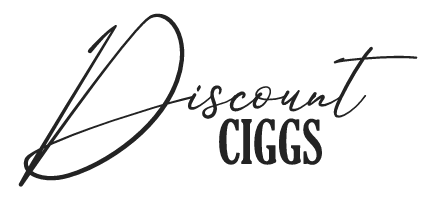Cigarettes and Haptic Technologies
The melding of cigarettes with haptic technologies heralds an era where technology seamlessly permeates our daily habits. Even the time-honored ritual of smoking, deeply embedded in human history, is now on the brink of a transformative leap. As the boundaries between the tangible and virtual blur, imagine experiencing the tactile sensations of lighting up and inhaling, all within a virtual realm. With haptic innovations, which convey the sense of touch and texture, this once-imaginative concept is edging closer to reality. Such advancements propose not just a novel experience but also hint at potential avenues for addressing health concerns related to traditional smoking. The blend of tradition with futuristic tech beckons a new chapter for smokers and technology enthusiasts alike. As we step into this brave new world, the line between what's real and virtual may just become indistinguishable, redefining age-old habits in unexpected, innovative ways. So, next time you think about lighting up, consider that the future might just have you experiencing it in a wholly different, tech-driven dimension.
Introduction
In the intricate tapestry of human history, few habits have been as persistent and culturally pervasive as smoking. This ritualistic practice, which dates back centuries, has witnessed its fair share of evolution. From the humble origins of pure tobacco leaves to the introduction of filtered cigarette products and the more recent trend of vaping, smoking has always been in a state of flux, adapting and changing with the times. Each innovation, whether it was the transition to filtered cigarettes or the adoption of e-cigarettes, was driven by societal needs, health concerns, or simply a quest for a better experience.
Now, as we stand at the precipice of a new era, another potential revolution beckons, merging the realms of smoking with cutting-edge technology. Enter the world of virtual reality (VR) and haptic technologies. Imagine a future where the tactile sensations of smoking – the feel of the cigarette between your fingers, the texture of the smoke, and even the heat of the ember – are simulated in a virtual environment. This isn't just about visual immersion, as VR often is. With haptics, the very act of smoking could be replicated, offering a sensory experience devoid of actual tobacco. As technological advancements continue to redefine boundaries, it's thrilling to envision how they might further reshape age-old practices like smoking.
The Evolution of Smoking Experiences
The journey of smoking, as a cultural and sensory experience, is one steeped in history and continuous evolution. Tracing its origins, the act began with the simplicity of burning pure tobacco leaves. Those early days, defined by the raw and unfiltered nature of smoking, were just the nascent stages of a practice that would undergo significant transformation in the coming centuries. As societies grew, trade expanded, and tastes refined, the methods and substances associated with smoking began to diversify. The shift from the rustic, organic feel of plain tobacco to more processed and sophisticated forms reflected not just changing technologies, but also the evolving desires and preferences of smokers worldwide.
In the modern era, the landscape of smoking has been marked by unprecedented innovations, primarily driven by health considerations and technological advancements. Enter the world of e-cigarettes and vapes – devices that have fundamentally altered the smoking paradigm. These new-age tools, while preserving the essence of the act, provide myriad flavored experiences, catering to a diverse palate. Mint, berry, coffee, and countless other flavors invite users into a more personalized and tailored experience, one that is as much about enjoyment as it is about reducing the harmful impacts of traditional smoking. But amidst this flavor-filled evolution, an intriguing dimension has emerged: the sensory aspect. Beyond just taste and smell, the tactile sensations associated with smoking play a profound role in the overall experience. The gentle pull, the resistance of the drag, the gradual warmth that spreads through the chest as the smoke is inhaled – these are sensations that long-time smokers identify with deeply.
This sensory dimension brings to the fore an exciting technological frontier: haptic technology. For those unfamiliar, haptics deal with touch and tactile feedback, replicating sensations that can be felt physically. Imagine a scenario where the physical sensations of smoking – the touch of the cigarette or vape pen, the heat, the smoke's texture – are simulated virtually. With the rapid strides being made in haptic feedback systems, such a scenario isn't far-fetched. Users could potentially experience the full spectrum of smoking sensations without lighting a single leaf. This opens intriguing possibilities, especially in fields like addiction therapy or entertainment. As we look ahead, the intersection of smoking with haptic technology promises a future where the lines between the real and virtual continue to blur, crafting experiences that are immersive, safer, and infinitely customizable. The story of smoking's evolution is far from over, and its next chapters are set to be as exciting as any that have come before.
Haptic Technologies: A Primer
What are haptic technologies?
Haptic technology, a term that might sound intricate and high-tech at first glance, fundamentally revolves around one core principle: the sense of touch. It's a domain that delves into replicating and simulating tactile sensations, bridging the gap between the digital and physical realms. Think back to moments when your gaming controller throbbed in response to in-game actions or when your smartphone screen emitted subtle vibrations to acknowledge your touch. These seemingly small yet significant interactions are the very essence of haptics in action. In essence, haptic technology offers a tangible dimension to our otherwise flat digital interactions, transforming passive engagements into dynamic and multi-dimensional experiences. By simulating the tactile feedback we naturally encounter in the physical world, haptic innovations not only enhance our interactions with gadgets but also pave the way for more immersive and realistic virtual experiences. As we navigate an increasingly digital age, haptic technology stands as a testament to the endless possibilities of intertwining the tangible with the virtual, reshaping how we perceive and engage with the digital frontier.
How have they evolved over the years?
The journey of haptic technology has been nothing short of remarkable. Beginning its voyage with rudimentary vibrations, it now stands at the forefront of sophisticated innovations like force feedback and texture simulation. Initially, haptics found their ground in simple tactile responses – a buzz here, a jolt there. But as the wheels of innovation churned, this arena saw a transformative expansion. From letting gamers feel the thud of an explosion in their controllers to assisting surgeons in replicating the tactile nuances of surgeries in virtual training modules, the gamut has broadened significantly. The exponential growth in this domain underscores not just technological progress but also our innate desire for richer, more immersive experiences. Whether it's the simulated roughness of a surface under our virtual fingertips or the replication of resistance and pressure in digital environments, haptic technologies are ceaselessly pushing boundaries. And as they evolve, they're opening up diverse avenues, from entertainment and education to specialized sectors like healthcare. Today, haptics stand at the cusp of a future that promises an even deeper fusion of the real and digital worlds, with possibilities limited only by imagination.
Simulation of smoking experiences in virtual environments
Virtual smoking: The new frontier
Picture this: you're immersed in a meticulously crafted virtual realm, and you reach out to light a cigarette. As you take a drag, you can almost feel the familiar pull and sensation of smoke coursing through, even though there's no actual cigarette in hand. This might seem like a scenario straight out of a futuristic novel, but it's a vision that's inching closer to reality, thanks to the marvels of haptic technology. By simulating tactile experiences, haptics have the potential to redefine our interactions in virtual spaces, making them almost indistinguishable from real-life sensations. Virtual smoking, as conceptual as it may sound now, represents just a fragment of this potential. The ability to replicate the intricate details of smoking— from the weight of the cigarette to the warmth of the smoke— not only promises an immersive experience but also hints at novel ways to address health and addiction concerns associated with traditional smoking. As technology continues to blur the lines between tangible and virtual, it's fascinating to envision a future where our sensory experiences in digital landscapes rival, or even surpass, those in the real world.
The science behind virtual smoking simulations
Diving into the realm of virtual smoking simulations is akin to opening a chapter of science that seamlessly melds reality with digital innovation. At its core, the confluence of Virtual Reality (VR) visuals and the intricacy of haptic feedback seek to craft an uncannily lifelike smoking experience. Envision a scenario where advanced sensors meticulously track every nuance of your hand movements as you pretend to light up and take a drag. These sensors, in tandem with cutting-edge haptic technologies, would then replicate the sensations synonymous with smoking— the resistance of a drag, the gentle warmth, even the ephemeral burn. This is not merely a visual mirage; it's an orchestrated symphony of tactile feedback aiming to deceive our senses into believing the virtual as tangible. As we embark on this unprecedented journey of simulation, it's imperative to recognize that we're not just recreating an act but are pushing the boundaries of what's possible in immersive experiences. In a world where the digital often mimics the real, such advancements remind us of the limitless possibilities that emerge when technology seeks to mirror, enhance, and sometimes even transcend human experiences.
The role of touch and feel in the tactile experience of smoking
The sensory experience of smoking
When we delve into the sensory journey of smoking, we're traversing a path that's rich with tactile nuances. It's not merely about lighting up and inhaling; it's the weight of the cigarette between the fingers, the palpable warmth as the flame draws near, and the distinct sensation as the smoke fills one's lungs. These tactile experiences are integral, shaping the smoker's connection with the act. But here lies a compelling thought: what if we could harness technology to either amplify these sensations or replicate them, sans the associated health hazards? Imagine a world where smokers are treated to an enhanced tactile journey, where every drag feels more pronounced and the warmth more vivid, yet without the repercussions of actual smoking. Or even more intriguing, a scenario where the tactile journey is reproduced in its entirety, devoid of any real native cigarette. As we grapple with the health implications of smoking, such advancements could offer alternatives that retain the sensory essence while stripping away the risks. This interplay between the tangible and the technological hints at a future where experience and safety might coalesce, revolutionizing the age-old act of smoking.
How haptic tech enhances the tactile smoking sensation
Navigating the terrain of haptic technology in the context of smoking is like unearthing a goldmine of sensory possibilities. At its essence, smoking is as much a tactile ritual as it is a visual or aromatic one. Think of the familiar heft of a cigarette, the gentle warmth radiating from its ember, or the tug one feels when drawing in smoke. Haptic technology stands at the crossroads of this tactile journey, equipped with the prowess to replicate, and even elevate these sensations. By mimicking the touch, the pressure, and the varied textures associated with smoking, haptics can weave an almost surreal, immersive smoking experience in the digital realm. But beyond mere replication, there's a profound potential lurking: smoking cessation. If individuals can be provided with an experience that rivals real smoking in terms of tactile feedback, minus the health risks, it might pave the way for more effective cessation strategies. The fusion of the age-old act of smoking with cutting-edge haptic innovations not only offers a tantalizing peek into the future of sensory experiences but also hints at transformative solutions to public health challenges.
Potential Future Innovations Merging Haptics with smoking experiences
Next-gen innovations on the horizon
Peering into the horizon of potential innovations, one can glimpse a transformative fusion of haptic technology with the age-old act of smoking. Consider a realm where the boundaries of tactile sensation and digital representation blur, crafting a near-perfect simulacrum of the smoking ritual. Here, smokers could immerse themselves in a rich, layered experience, relishing every drag, feeling the weight of the cigarette, and experiencing the warmth of the ember - all within the confines of a virtual environment. The beauty of this next-gen innovation isn't just in its replication but in its transformative potential. Offering an authentic, guilt-free alternative, it paves the way for smokers to gravitate towards healthier choices without feeling detached from the ritualistic aspects they've come to cherish. This union of technology and tradition showcases a promising future: one where the pleasures of tactile experience don't come at the cost of well-being. As we stand at this intersection of past habits and futuristic tech, it's enthralling to envision a world where haptic-driven virtual smoking experiences could become a beacon for those seeking to quit, providing solace in familiarity while championing a healthier path forward.
How they could reshape the smoking world
In the ever-evolving tapestry of technological innovations, there lies a tantalizing prospect of merging haptic technology with virtual reality (VR) to revolutionize the realm of smoking. Visualize a scenario where the tactile intricacies of smoking— the gentle tug of a drag, the heat from the burning tip, and even the weight of the cigarette—are so impeccably recreated that the demarcation between the tangible and the virtual becomes almost indiscernible. Haptic tech, with its prowess in simulating touch and texture, when intertwined with VR's immersive visual experiences, holds the promise to craft a smoking experience that's both authentic and devoid of health repercussions. Such an amalgamation could be a game-changer, providing smokers with an avenue to indulge in the ritual without the associated risks. Beyond just a safer alternative, this confluence has the potential to redefine how individuals perceive and engage with smoking, pushing it from a tangible act to a digital experience that satiates sensory cravings. As the boundaries between the real and the virtual continue to thin, the future of smoking, underpinned by haptic and VR innovations, beckons a transformative shift towards health-centric yet deeply immersive experiences.
The influence of society and regulations
The multifaceted relationship between society, regulatory frameworks, and smoking is deeply entrenched. Over the decades, as the health implications of smoking became increasingly evident, public perception underwent a profound transformation. Once glamorized in film and popular culture, smoking soon found itself in the crosshairs of health advocates and regulators, leading to significant shifts in societal viewpoints and legislative approaches. This evolving backdrop has had a direct impact on the industry, with both challenges and opportunities emerging from the changing landscape.
Amidst this, technology, as it often does, offers a glimmer of hope and a promise of transformation. With the hazardous effects of traditional smoking being a prominent concern, the thrust towards healthier alternatives has gained momentum. Enter the realm of tech-infused smoking experiences, which, if executed well, could bridge the gap between the tactile pleasure of smoking and the health-conscious world we're evolving into. Such innovations could be perceived as a beacon, especially for those individuals caught in the conundrum of wanting to quit due to health concerns yet finding it challenging due to the ingrained ritualistic and sensory experiences associated with smoking.
However, the reception and success of these tech-driven alternatives will be significantly influenced by societal perspectives and regulatory considerations. Will society, which has grown increasingly wary of smoking, embrace these innovations as a positive step forward? Or will there be apprehensions about the potential implications of merging technology with an act that has health repercussions? Moreover, how will regulatory bodies perceive and approach these innovations? While they may offer a reprieve from the harmful effects of traditional smoking, there could be unforeseen challenges that regulators might want to address. In essence, the interplay between society's views, regulatory guidelines, and the burgeoning field of tech-infused smoking experiences promises to be a dynamic and evolving narrative, potentially reshaping the future of smoking in unprecedented ways.
Health implications of blending haptic tech with smoking
The integration of haptic technology with the act of smoking paints a futuristic vision of indulgence without many of the known harmful physical consequences. On the surface, this fusion seems to herald a new era where smokers can satiate their cravings without ingesting harmful toxins or facing the risk of respiratory ailments. The allure of such an experience, rich in tactile sensations yet devoid of the noxious components of traditional smoking, seems promising. However, as we delve deeper, it becomes essential to understand and critically evaluate the broader spectrum of health implications that this tech-smoking amalgamation might present.
Of paramount concern is the potential impact on mental health. While eliminating the physical act of smoking might reduce exposure to harmful chemicals, the immersive experience created by the union of haptics and virtual reality could foster a new set of dependencies. The hyper-realistic simulation might lead users to spend excessive time in this virtual realm, potentially impacting their social interactions, sleep patterns, and overall mental well-being. Furthermore, the boundary between reality and the virtual world might blur for some, leading to challenges in distinguishing simulated experiences from genuine ones. While the pursuit of a safer alternative to traditional smoking is commendable, it's imperative to tread with caution, ensuring that in mitigating one health risk, we don't inadvertently introduce another. The balance between innovation and its implications on holistic health remains a delicate tightrope to walk.
Conclusion
As we stand on the precipice of technological evolution, the melding of cigarettes with haptic technology offers a tantalizing vision of the future. It's a vista where age-old rituals meet cutting-edge innovation, promising the sensory gratification of smoking minus its detrimental health impacts. But, like any transformative leap, this blend comes with its own set of caveats. The appeal of a health-conscious smoking experience, rich in tactile sensations, is undeniable. Yet, it's essential to temper enthusiasm with prudence, ensuring we don't overlook any unforeseen consequences that might emerge from this union. Every technological advancement, while pushing the envelope, also brings with it the responsibility of introspection and foresight. As we endeavor to reshape longstanding habits through the lens of technology, the journey demands both optimism for the potential benefits and vigilance toward the challenges that might lie ahead.
FAQs
How realistic is the virtual smoking experience?
As technology progresses, the gap between the real and the virtual narrows. The aim is to make it as realistic as possible.
Is virtual smoking safer than traditional smoking?
While it eliminates the risks of tobacco and inhalation, the long-term effects of extended VR use are still under study.
Can haptic tech aid in smoking cessation?
It holds potential. Simulating the tactile experience, might help bridge the gap during the quitting phase.
Will virtual smoking be subject to the same regulations as regular smoking?
It's too early to tell, but any product affecting health will likely undergo regulatory scrutiny.
What's the next step for haptic technologies and smoking?
As both fields evolve, expect to see trials and prototypes blending the two for unique smoking experiences.
References
- Canadian Action on Smoking & Health: www.ash.ca
- BMC Pregnancy and Childbirth: bmcpregnancychildbirth.biomedcentral.com
- Heart and Stroke Foundation of Canada: www.heartandstroke.ca



